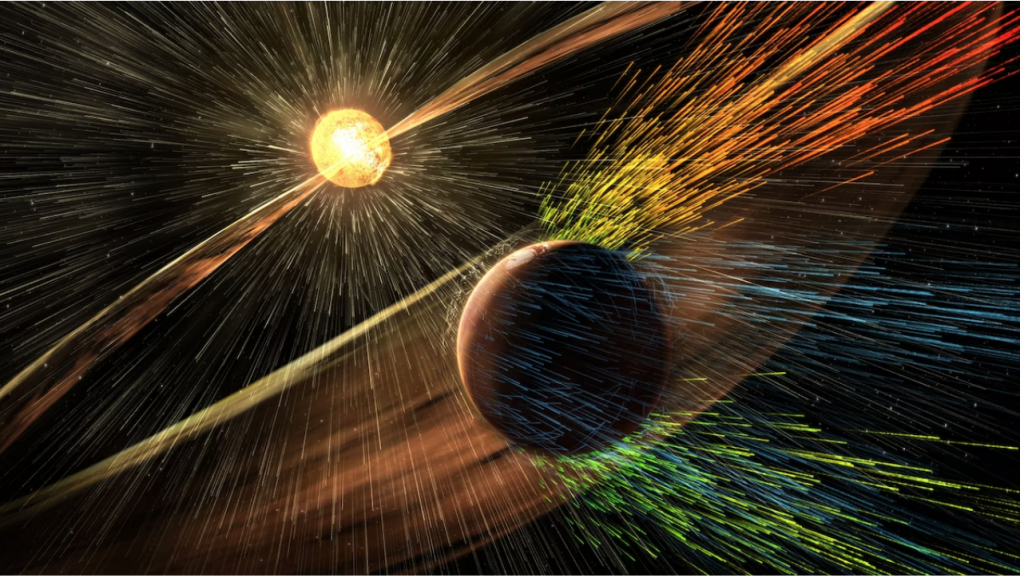
This image made available by NASA in November 2015 shows an artist’s rendering of a solar storm hitting the planet Mars and stripping ions from the planet’s upper atmosphere. (Goddard Space Flight Center/NASA)
Researcher Predicts Potential Downing of Electrical Grids from Coronal Mass Ejections
While Earth continues to post record-high global temperatures, it feels like we are starting to pay attention to looking more at our physical world rather than computer screens.
While Bill Gates and others have mentioned spraying the skies to lower the earth’s temperature, some people believe they are already doing that. No matter where in the world you are, of course, what is going on with the sun will directly affect the world.
The real fear in an article from thewashingtonpost.com is about sunbursts that could take down our electric grids worldwide. Actually, the phrase Kelsey Ables used was an energy blast from the sun, and ” we could be boomeranged back into the analog era.” Shudder.
Carrington Event
A widespread internet outage could, indeed, be brought on by a strong solar storm hitting Earth — a rare but very real event that has not yet happened in the digital age, experts say. When a solar storm known as the Carrington Event struck in 1859, telegraph lines sparked, operators were electrocuted and the northern lights descended to latitudes as low as Jamaica.
A 1989 solar storm took out the Quebec power grid for hours. And in 2012, a storm just missed Earth.
As the sun, which has roughly 11-year cycles, enters a particularly active period known as the “solar maximum” in 2025, researchers warn of impending chaos in our electrical grids.
“Sangeetha Abdu Jyothi, a computer science professor at the University of California at Irvine whose paper ‘Solar Superstorms: Planning for an Internet Apocalypse’ has played a role in popularizing the term, started thinking about internet resilience when the coronavirus began to spread, and she realized how unprepared we were for a pandemic. Research on widespread internet failure was scant.
“We’ve never experienced one of the extreme case events, and we don’t know how our infrastructure would respond to it,” Jyothi said. “Our failure testing doesn’t even include such scenarios.”
Enormous Economic Impact
If such an event were to occur the financial impact would be huge. Such outages could last for months, depending on the scale and how long it takes to repair the damage. The economic impact of just one day of lost connectivity in the United States alone is estimated to be more than $11 billion, according to the internet watcher NetBlocks. That was just a one-day loss.
“A few weeks ago, scientists published new evidence from the probe about the source of solar winds, which they say are the result of a phenomenon called ‘magnetic reconnection.’ While the research did not look specifically at solar storms, it has broader relevance. The solar atmosphere changes very slowly, says Stuart D. Bale, a physics professor at the University of California at Berkeley and a principal investigator for NASA working on the probe. So ‘anytime something changes fast magnetically on the sun, it’s probably due to reconnection.’ “
The loss of our phone connections, our GPS directions to a location, or just scrolling through social media would all be very difficult for most of us to deal with. We have become part of the digital universe whether we want to admit it or not.
The article does not give any answers to this issue but it does fill you in on what is possible in the next few years and now is a good time to start thinking about what life might be like if the big event were to occur. In all likelihood, it will.
read more at washingtonpost.com







Leave A Comment